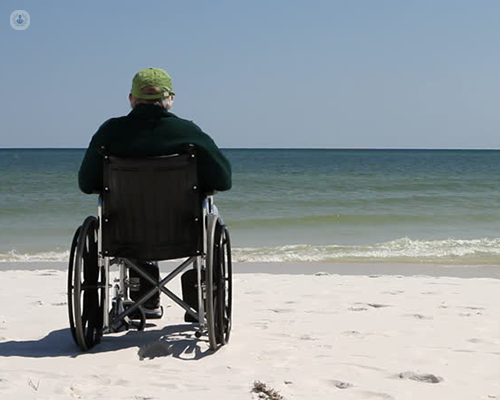
A quick guide to spina bifida
Spina bifida is a neural tube defect wherein the spinal cord and spine do not form correctly in the womb. In normal pre-natal growth, the neural tube begins to develop in the early stages of pregnancy before closing 4 weeks after birth. In babies with spina bifida, however, the neural tube grows abnormally. Spina bifida can manifest in both severe and mild forms. In severe cases, walking aids or wheelchairs will most likely be necessary.

Fast facts about spina bifida
- There are several different types of spina bifida. The three most common forms are myelomeningocele, meningocele, and spina bifida occulta. Spina bifida occulta is the mildest form, whereas myelomeningocele is the most severe
- Around 1 in 1000 children are born with spina bifida each year in the UK. Ireland and Wales have the highest rates of spina bifida in the world
- Sometimes people with spina bifida do not experience any symptoms
- The exact cause of spina bifida remains unknown, however there are risk factors believed to increase the chances of developing the condition. These include genetics, folic acid deficiency, and the intake of certain medications during pregnancy.
- It has been said that both obesity and diabetes could play a role in the development of spina bifida
- The words spina bifida are of Latin origin. Spina bifida literally translated means “spine split”.
- The majority of people who have spina bifida end up developing bowel and incontinence problems
- Women at the childbearing age who take a supplement of 400mg of folic acid are less likely to give birth to a baby with spina bifida, experts believe
What are the main symptoms of spina bifida?
Symptoms vary depending on the type of spina bifida and a number of other factors, but generally include:
- A clump of hair on the back
- The appearance of a fatty sac on the baby´s back
- A birthmark or indent
- Curved spine
- Weakness or even paralysis in the legs
- Seizures
- Incontinence
- Orthopaedic deformities
- Inability to feel hot or cold on the skin
Spina bifida treatments
As spina bifida can be a fatal condition, it is important to choose the right treatment for each specific case. Spina bifida treatments include:
- Surgery shortly after birth to close the hole in the spinal canal and treat possible hydrocephalus
- Prenatal surgery
- Ongoing treatment for bladder and bowel problems
- Mobility equipment (such as a wheel chair) in cases where mobility is reduced
Generally speaking, spina bifida occulta may not always need treatment. If you have any further queries about spina bifida, get in touch with a specialist.

